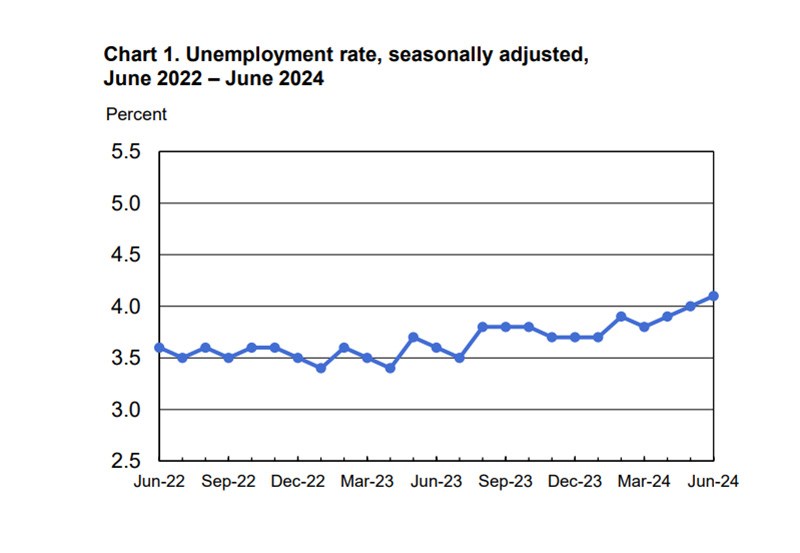
U.S. Economy Adds 206,000 to Payroll in June

(Image courtesy of Bureau of Labor Statistics; Breakout image courtesy of Jeff Denlea/pexels.com)
Total nonfarm payroll employment was up by 206,000 in June, and the unemployment rate was at 4.1%, per the U.S. Bureau of Labor Statistics.
Job gains specifically occurred in government, health care, social assistance and construction.
The change in total nonfarm payroll was revised down for April, by 57,000 (from a gain of 165,000 to 108,000.) It was also revised down by 54,000 for May (from a gain of 272,000 to 218,000.)
“Similar to May, the headline gain in nonfarm payroll employment data in June does not tell the entire story. While the headline gain showed an increase of 206,000 jobs, more than one-third of that was a gain in government employment, largely a function of increases in state and local jobs. Although June’s increase was above our expectations, both April and May figures were revised down by a combined 111,000 jobs, marking the three-month average down to a 177,000 increase,” said MBA SVP and Chief Economist Mike Fratantoni.
“Beyond this headline, other aspects of the data indicate a slowing job market. The unemployment rate ticked up to 4.1%. Wage gains slowed again to 3.9% on a 12-month basis, and temporary hires actually decreased by 49,000, a sign that business demand for labor is decreasing,” he continued.
What does that spell for potential Federal Reserve rate cuts?
“The slower inflation data over the past couple months, when paired with the softening labor market, bolster the case for the FOMC to begin reducing the fed funds rate as early as its Sept. 18 meeting. Our forecast remains for two 25 bps rate cuts this year at the September and December FOMC meetings,” wrote Wells Fargo Economists Sarah House and Michael Pugliese.
Fratantoni’s sentiments were similar. “Inflation data showing more reductions for the next couple of months will be the most important evidence that the Federal Reserve needs to cut rates in September. The current job market data points in that direction once you read below the headline,” he said.
